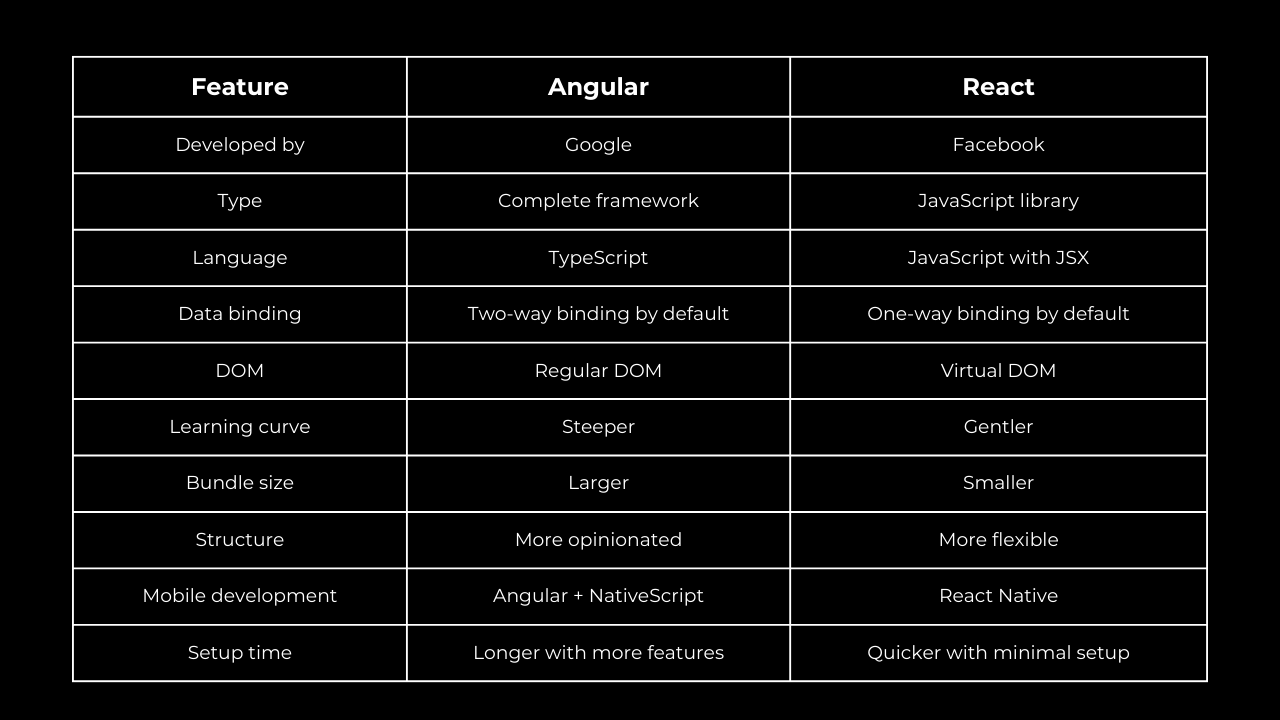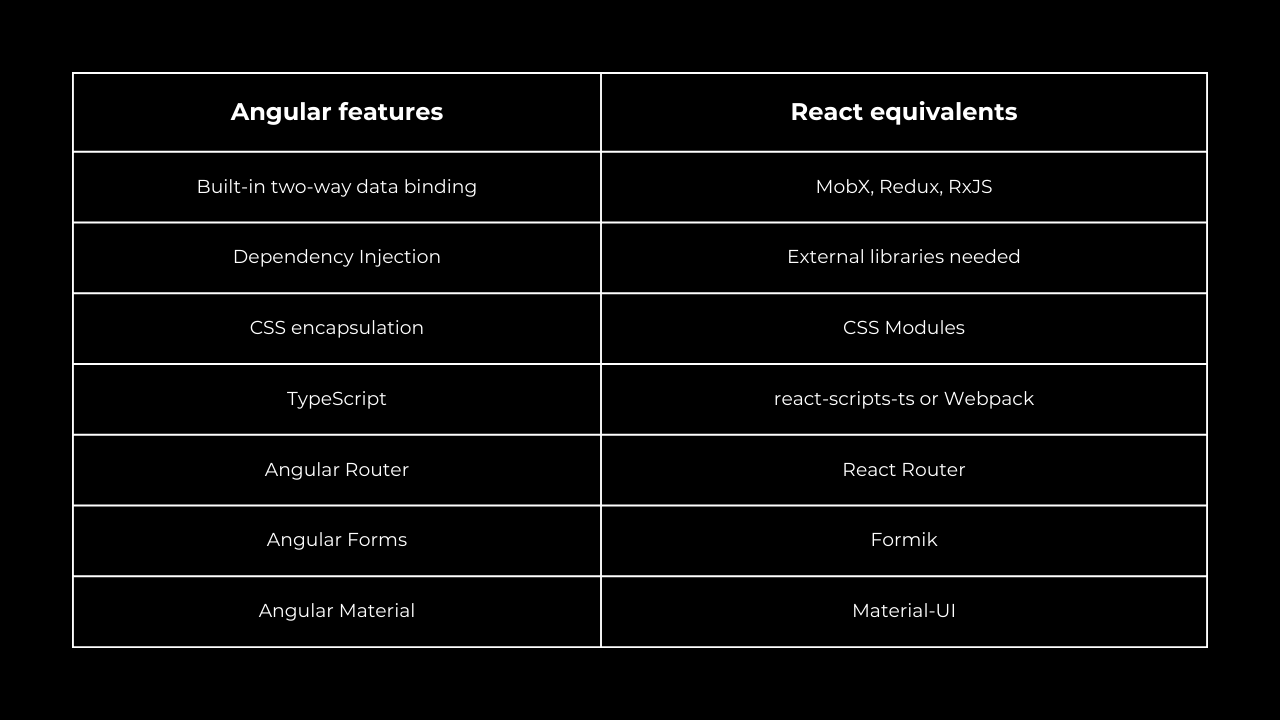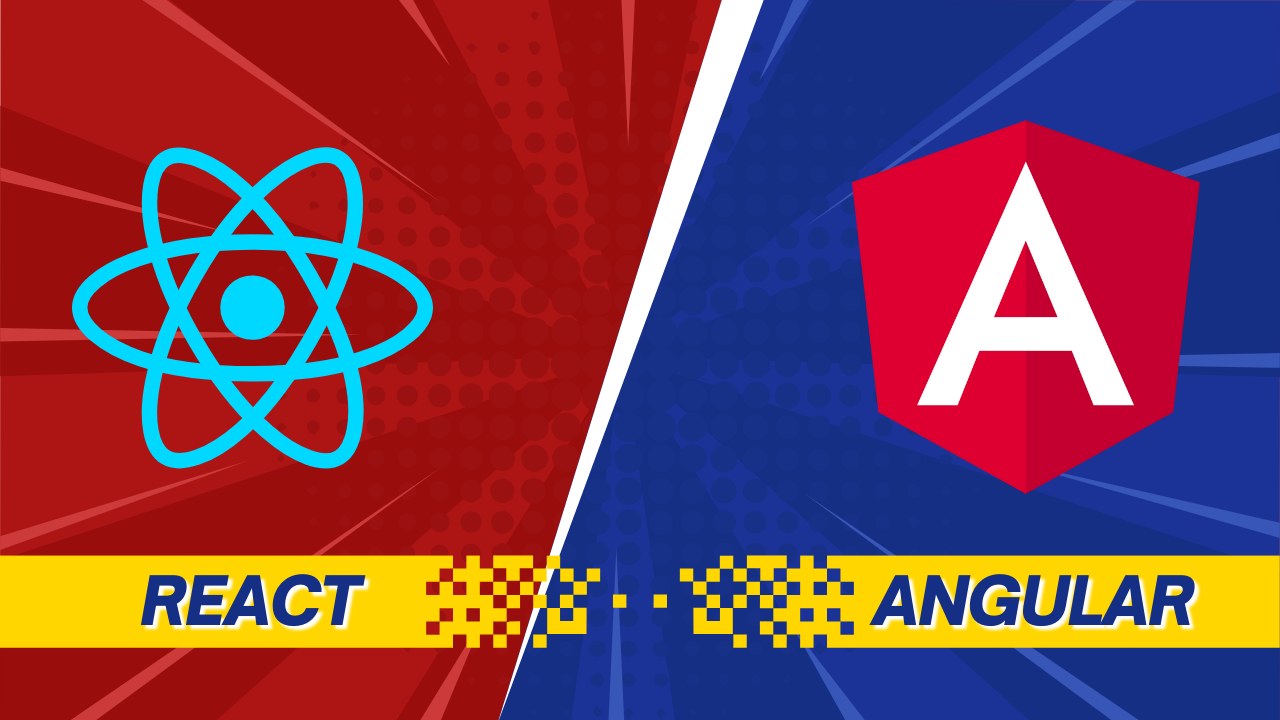Deciding between Angular and React is a critical choice for any web development project. Both technologies have their strengths, but your specific requirements will determine which is the better fit. Let's explore what each offers and how they compare.
Introduction
If you're building a web or mobile application, choosing the right technology stack is crucial. Among the most popular options are Angular, a comprehensive framework by Google, and React, a versatile library from Facebook. Angular powers major applications like Gmail, YouTube TV, and Udacity, while React serves as the foundation for Instagram, Facebook, and Netflix. Though they share some similarities, they approach web development with fundamentally different philosophies.
Understanding the fundamental difference
Angular is a complete JavaScript framework written in TypeScript, originally released by Google in 2016 as Angular 2—a complete rewrite of the earlier AngularJS. React, released in 2013, is an open-source JavaScript library focused specifically on rendering views.
While Angular provides a full suite of tools and features out of the box, React focuses on the view layer and lets developers choose additional libraries for routing, state management, and other functionalities.
Core features comparison
Angular includes TypeScript as its primary language, Angular CLI for project scaffolding, built-in dependency injection, two-way data binding, integrated routing, form handling, cross-site scripting protection, HTML templates, and component CSS encapsulation.
React provides a virtual DOM for performance optimization, JSX file format that combines JavaScript and HTML, cross-site scripting protection, functional components, and basic state management tools like setState and Context API.
Key differences between Angular and React
Angular and React are two popular tools for building websites and apps. While both help create fast and interactive user interfaces, they work in different ways. Here's a simple comparison to understand the key differences.

Component architecture
Both technologies embrace component-based architecture, but implement it differently. In Angular, components are created using decorators (@component) that define metadata for a class. Components typically consist of separate files for templates, styles, and logic.
React components are JSX files containing both JavaScript and HTML markup in a single file. These can be either class-based or functional components, with props passed through in a unidirectional fashion.
Data binding approaches
Data binding connects your data model to the user interface. Angular emphasizes two-way data binding, while React prefers one-way data flow. One-way data binding means data flows in a single direction from model to view. This makes state management more predictable, as changes in a component can only affect components below it in the hierarchy. Two-way data binding allows data to flow between model and view in both directions. When the view updates, the model updates automatically and vice versa.
Performance considerations
Since Angular's 2016 release, both technologies offer comparable performance for most applications. Angular often performs better in task-based benchmarks, while React may have an edge in overall page loading times due to its virtual DOM implementation. React's virtual DOM efficiently updates only necessary parts of a page, which provides a performance advantage for applications requiring extensive DOM manipulation, such as social media feeds or image galleries.
Learning curve and developer experience
React generally has a gentler learning curve, requiring only knowledge of HTML and JavaScript to get started. Once comfortable with JSX files, developers can gradually incorporate additional libraries as needed. Angular requires learning TypeScript and Angular-specific patterns, but provides a more structured environment with comprehensive documentation and tools. Its "batteries included" approach means less time spent researching and integrating third-party solutions.
Mobile development capabilities
For mobile development, both frameworks offer similar options:
Hybrid apps: Using frameworks like Ionic to wrap web applications in a native container. This approach prioritizes developer productivity but may sacrifice some performance.
Compiled apps: Using React Native (for React) or NativeScript (for Angular) to compile components into native code. This approach offers near-native performance but requires adapting web code to the mobile framework.
Advantages and challenges
Angular and React both have things they do well and some parts that can be tricky. Angular gives you everything in one place, while React lets you choose what you need.
Angular advantages:
Complete framework with all necessary tools built-in
Dependency injection for easier testing and component management
Consistent, opinionated approach for standardized development
Enterprise-ready for large-scale applications
TypeScript integration for type safety and improved maintainability
MVVM support for better separation of concerns
Angular challenges:
Angular does come with a steeper learning curve, requiring knowledge of TypeScript and Angular-specific patterns before developers can be productive. Two-way data binding, while convenient, can create complexity in very large applications as state changes become harder to track.
React advantages:
Flexibility to choose additional libraries as needed
Virtual DOM for efficient rendering performance
Functional approach encouraging pure functions
Component reusability through mix of class and functional styles
Unidirectional data flow for predictable state management
Active ecosystem with vast selection of supporting libraries
React challenges:
React's documentation tends to be fragmented across multiple library sources, requiring developers to piece together information. The ecosystem's complexity can be overwhelming for beginners faced with numerous choices for routers, state management, and other essential functions.
Additional tools comparison
Angular comes with many built-in tools, while React relies on external libraries to add similar features.

Making the right choice
When deciding between Angular and React, consider your specific project requirements and team capabilities. Choose Angular if you're building enterprise-level applications where consistency is crucial, if your team prefers TypeScript and structured patterns, or if your application benefits from two-way data binding and dependency injection.
Choose React if your views require heavy DOM manipulation, if you value flexibility in choosing supporting libraries, if you prefer functional programming with unidirectional data flow, or if you want a smaller learning curve to get started.
Conclusion
Both Angular and React are excellent choices for modern web development. Angular provides a comprehensive framework with everything needed out of the box, while React offers flexibility and a focused approach to the view layer. The best choice depends on your project requirements, team expertise, and development philosophy. Either technology, when properly implemented, can deliver outstanding web and mobile applications with component-based architecture.



